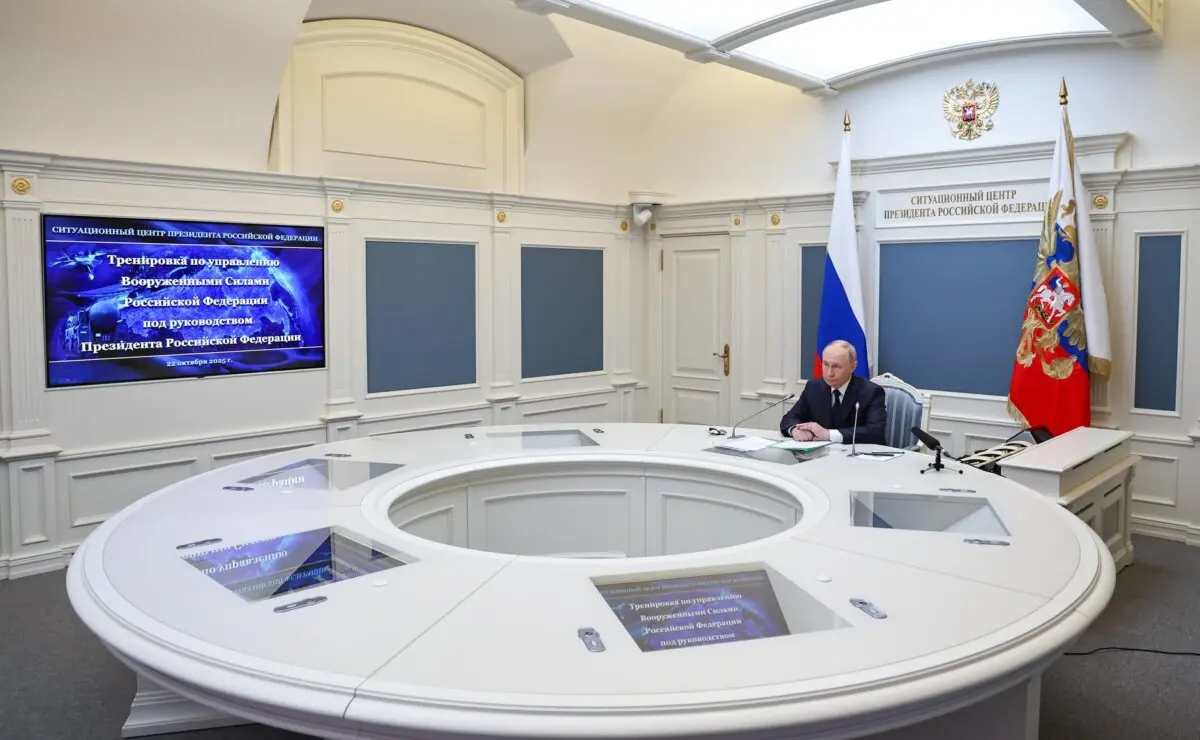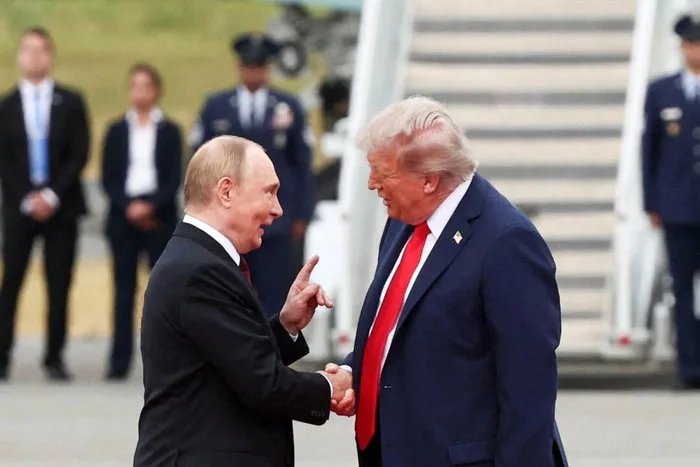By Evgenia Filimianova
President Donald Trump said on Oct. 30 that the United States and Russia are engaged in discussions on nuclear de-escalation, describing the talks as part of a broader effort to curb global nuclear risks.
Aboard Air Force One upon his return to Washington after touring Asia, Trump was asked by reporters whether his decision to order the Pentagon to resume nuclear weapons testing after a three-decade moratorium could contribute to a more dangerous international environment.
“I think we have it pretty well locked up,” Trump said. “I’d like to see a denuclearization, because we have so many, and Russia has some, Russia’s second, and China’s third, and China will catch up within four or five years.
“I think de-escalation, what they would call denuclearization, would be a tremendous thing, and it’s something we are actually talking to Russia about … and China would be added to that if we do something.”
Russia has a total inventory of 5,459 nuclear warheads and the United States has 5,177, according to the Federation of American Scientists. Both figures include retired warheads.
China follows with about 600, while France, the UK, India, Pakistan, Israel, and North Korea possess smaller stockpiles.
In an Oct. 29 post on Truth Social, Trump said: “Because of other countries’ testing programs, I have instructed the Department of War to start testing our Nuclear Weapons on an equal basis. That process will begin immediately.”
If a nuclear warhead is tested, it would end a 30-year U.S. moratorium, which began after the last underground test in 1992.
It remains unclear what form the renewed testing will take. Trump did not specify whether the tests would be conducted underground, underwater, in the atmosphere, or in space.
Atmospheric, space, and underwater tests have been banned since the 1963 Limited Test Ban Treaty, although underground tests continued for decades before being halted.
New START
The New Strategic Arms Reduction Treaty (New START) is a cornerstone of nuclear arms control between Washington and Moscow.
Signed in 2010, the treaty limits deployed long-range nuclear weapons and allows mutual inspections to ensure compliance.
The treaty is set to expire in February 2026, raising concerns that, without renewal or replacement, the world’s two largest nuclear powers would face each other without any binding limits for the first time in decades.
Moscow has offered to extend the agreement, a proposal Trump earlier in October said was a “good idea.” Kremlin spokesman Dmitry Peskov welcomed Trump’s response, saying that it “gives grounds for optimism” about extending the treaty.
Both Washington and Moscow have expressed interest in expanding talks to include other nuclear powers.
Since his first term, Trump has called for China to join the arms control process, warning that Beijing was rapidly expanding its arsenal. Moscow has said the weapons of the UK and France, both U.S. allies, must eventually be part of the discussion.
Peskov told Russia’s state-run TASS news agency in September that while talks should begin bilaterally, in the future it will not be possible to exclude the nuclear arsenals of London and Paris.
New Weapons
Russian President Vladimir Putin said on Oct. 10 that Russia is “very actively” developing and testing new nuclear weapons.
On Oct. 22, he directed a wide-ranging exercise of the country’s strategic nuclear forces, including the test launch of intercontinental ballistic and cruise missiles.

Putin said on Oct. 26 that Russia had carried out a test of its Burevestnik cruise missile, a nuclear-powered and nuclear-capable weapon that Moscow has claimed possesses unlimited range and the ability to evade existing missile defenses.
On Oct. 29, the Russian leader announced that Moscow had successfully tested the Poseidon nuclear-powered and nuclear-capable super torpedo, describing the launch as “a tremendous success.”
According to Putin, the test took place a day earlier and demonstrated capabilities surpassing even the Sarmat intercontinental-range missile, known in the West as the SS-X-29 or “Satan II.”
“For the first time, we managed not only to launch it with a launch engine from a carrier submarine, but also to launch the nuclear power unit on which this device passed a certain amount of time,” Putin said.
“There is nothing like this,” he said, noting that there is no way to intercept the Poseidon, which analysts believe has a range of about 6,200 miles and can travel at about 115 mph.





